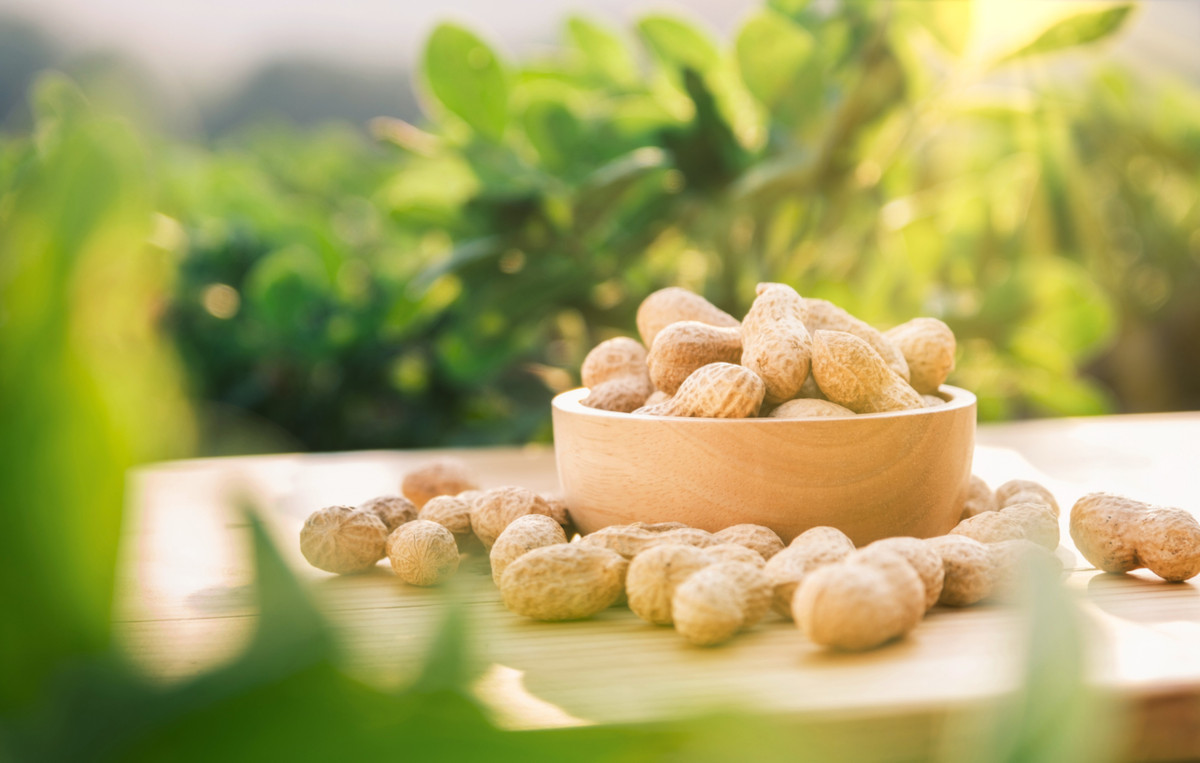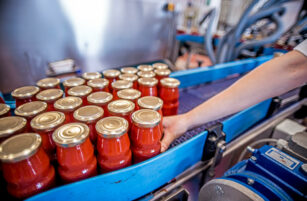Insight Focus
- Brazilian peanut production could jump if the crop is rotated with sugar cane.
- Around 1m hectares of sugarcane are reformed in Centre-South Brazil per year.
- São Paulo is responsible for 90% of Brazilian peanut production.
With demand rising in the international market, peanuts have been attracting the attention of Brazilian rural producers, especially in the Center-South region. The main production centers in Brazil are concentrated in Jaboticabal, Marília, Tupã and Dracena.
In the State of São Paulo, peanuts are grown in rotation with sugar cane, in a combination that has been working – and makes a lot of sense. After all, São Paulo is responsible for 55% of the sugarcane harvested area in the country.
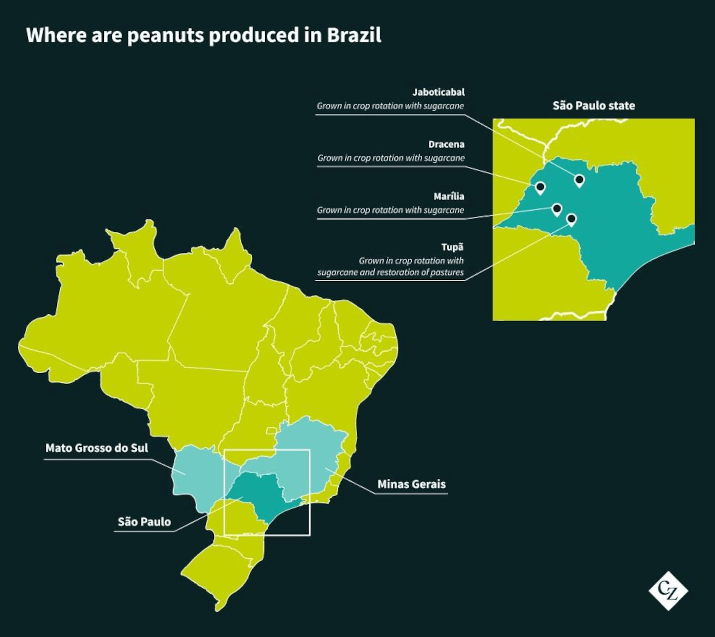
Last year alone, around 788k tonnes of peanuts were harvested in São Paulo, almost 14% more than in the previous cycle. It’s worth remembering that the State is responsible for around 90% of Brazilian peanut production.
There are many reasons for rural producers to invest in peanuts. To begin with, the plant helps fix nitrogen in the soil, which is essential for the development of sugarcane and other crops.
Peanuts also play an important role in controlling pests and diseases. And there is another positive point: the crop adapts well to various types of soil.
On the financial side, the appreciation of peanuts on the international market represents another advantage. To give you an idea, the average price of peanuts in the state of São Paulo in January was 20% above the same period last year.
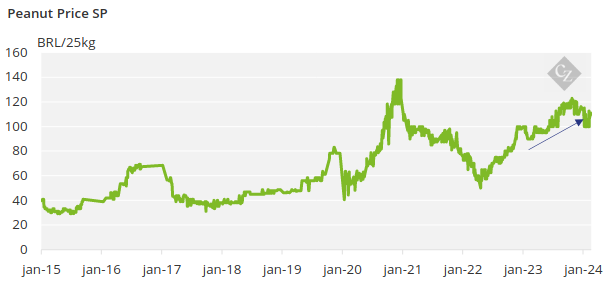
Source: IEA (Instituto de Economia Agrícola).
Another phenomenon has been boosting peanut cultivation in the Center-South. The price of soybeans, which is also used to reform sugarcane fields, has been disappointing producers.
A more profitable alternative could help migrate certain areas to other crops.
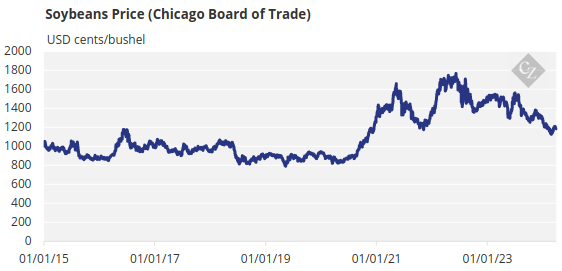
Souce: Bloomberg.
Huge Potential
After an average of 6 cuts (6 sugarcane cycles) the sugarcane area undergoes renovation, called sugarcane field reform. Simply put, the steps are:
- Destruction of sugarcane ratoon,
- Liming,
- Soil preparation,
- Planting an annual rotation crop,
- Harvesting annual crops,
- New sugarcane planting, soon after.
The crop chosen for rotation is used as a green manure, which not only acts as a cover crop, but can also improve soil properties. Among the most used crops are sunn hemp, soybeans, and peanuts.

Every year, around 1 million hectares of sugarcane are reformed in CS Brazil. This is 4 times more than the total area of peanuts planted in Brazil. If half of the reform area used peanuts for rotation, production could jump from the current 900k tonnes to more than 2.5m tonnes, assuming an average productivity of 3.6 tonnes/ha. This would place Brazil close to the annual production of the United States, currently the fourth largest producer in the world.

New Frontiers
Peanuts are also being cultivated more in Mato Grosso do Sul, with farmers keeping an eye on the cash generation opportunities that the commodity has represented.
To give you an idea, the area in Mato Grosso do Sul went from 1,300 hectares in the 2018/2019 harvest to 20,000 hectares in the last season.
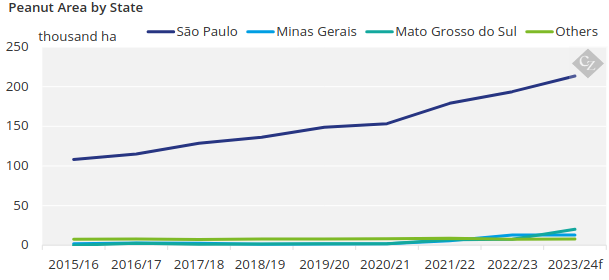
Source: CONAB.
We expect peanut production to grow and this will attract large groups. Cooperative Casul, which has been exporting peanuts to Europe since 2020, announced an investment of BRL 117.5 million for the construction of a food processing plant in Bataguassu, in Mato Grosso do Sul. Work should begin this year, according to Casul.
In the Central-West, Mato Grosso is also beginning to emerge as a producing state, attracting large companies.
Last year, Beatrice Peanuts, specialized in planting and exporting peanuts, installed a processing unit in Nova Ubiratã, less than 100 kilometers from Sorriso, one of the largest grain producing centers in Brazil.
LC Sementes, one of Beatrice Peanuts’ suppliers in Mato Grosso, has been growing peanuts in the region for a few years, in an area of 1,200 hectares. The expectation is to expand to 2 thousand hectares this year.
“Peanuts can become a great crop, especially in areas with more restrictive fertility, so it is an opportunity to opt for the oilseed in places where soybeans do not do so well”, says José Antonio de Souza Rossato Júnior, president of Coplana, a cooperative formed by sugarcane producers and sugarcane rotation crops.
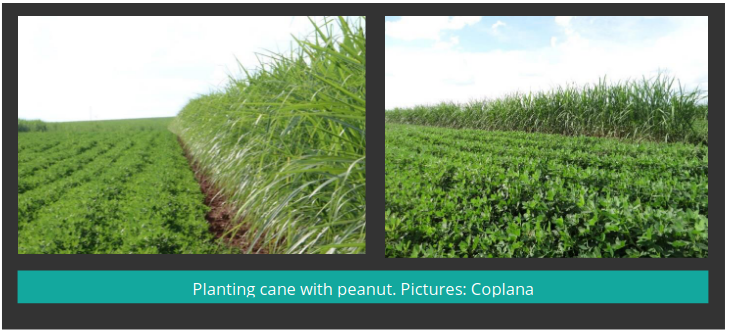
Sustainable
Peanut cultivation can also help the food vs fuel debate, especially in rotation with sugar cane. In the same area, it is possible to plant more than one type of food and at the same time produce clean energy, ethanol. “This is a production that seeks maximum sustainability”, says Júnior.

